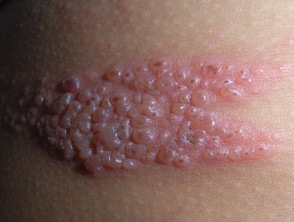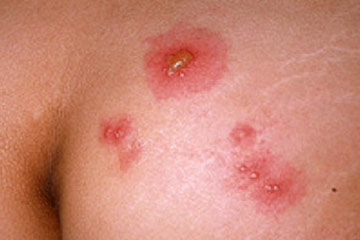Rabies Transmision
All species of mammals are susceptible to rabies virus infection, but only a few species are important as reservoirs for the disease.
In the United States, distinct strains of rabies virus have been identified in raccoons, skunks, foxes, and coyotes. Several species of insectivorous bats are also reservoirs for strains of the rabies virus.
Transmission of rabies virus usually begins when infected saliva of a host is passed to an uninfected animal. The most common mode of rabies virus transmission is through the bite and virus-containing saliva of an infected host. Though transmission has been rarely documented via other routes such as contamination of mucous membranes (i.e., eyes, nose, mouth), aerosol transmission, and corneal and organ transplantations.
What materials can spread rabies?
Rabies virus is transmitted through saliva and brain/nervous system tissue. Only these specific bodily excretions and tissues transmit rabies virus. If contact with either of these has occurred, the type of exposure should be evaluated to determine if postexposure prophylaxis is necessary.
Contact such as petting or handling an animal, or contact with blood, urine or feces does not constitute an exposure. No postexposure prophylaxis is needed in these situations.
Rabies virus becomes noninfectious when it dries out and when it is exposed to sunlight. Different environmental conditions affect the rate at which the virus becomes inactive, but in general, if the material containing the virus is dry, the virus can be considered noninfectious.
What type of exposure occurred?
Rabies is transmitted only when the virus is introduced into a bite wound, open cuts in skin, or onto mucous membranes such as the mouth or eyes.
Other factors to consider when evaluating a potential rabies exposure include the natural occurence in the area, the biting animal's history and current health status (e.g., abnormal behavior, signs of illness), and the potential for the animal to be exposed to rabies (e.g., presence of an unexplained wound or history of exposure to a rabid animal).
A currently vaccinated dog, cat, or ferret is unlikely to become infected with rabies.
When an exposure has occurred, the likelihood of rabies infection varies with the nature and extent of that exposure. Under most circumstances, two categories of exposure -- bite and nonbite -- should be considered.
Bite
Any penetration of the skin by teeth constitutes a bite exposure. All bites, regardless of body site, represent a potential risk of rabies transmission, but that risk varies with the species of biting animal, the anatomic site of the bite, and the severity of the wound.
Bites by some animals, such as bats, can inflict minor injury and thus be difficult to detect.
Was the bite from a provoked or an unprovoked attack? Bites inflicted on a person attempting to feed or handle an apparently healthy animal should generally be regarded as provoked. If it was an unprovoked attack, that's more likely to indicate that the animal is rabid.
Nonbite
The contamination of open wounds, abrasions, mucous membranes, or theoretically, scratches (potentially contaminated with infectious material from a rabid animal) constitutes a nonbite exposure.
Nonbite exposures from terrestrial animals rarely cause rabies. However, occasional reports of rabies transmission by nonbite exposures suggest that such exposures should be evaluated for possible postexposure prophylaxis administration.
Other contact by itself, such as petting a rabid animal and contact with blood, urine, or feces of a rabid animal, does not constitute an exposure and is not an indication for postexposure vaccination.
Is the animal available for testing?
A healthy domestic dog, cat, or ferret that bites a person should be confined and observed for 10 days. Any illness in the animal during the confinement period or before release should be evaluated by a veterinarian and reported immediately to the local public health department.
If signs suggestive of rabies develop, postexposure prophylaxis should be initiated. The animal should be euthanized and its head removed and shipped, under refrigeration, for examination by a qualified laboratory.
If the biting animal is stray or unwanted, it should either be confined and observed for 10 days or be euthanized immediately and submitted for rabies examination.
Skunks, raccoons, foxes and bats that bite humans should be euthanized and tested as soon as possible. The length of time between rabies virus appearing in the saliva and onset of symptoms is unknown for these animals and holding them for observation is not acceptable.
After exposure to wildlife in which rabies is suspected, prophylaxis is warranted in most circumstances. Because the period of rabies virus shedding in wild animal hybrids is unknown, these animals should be euthanized and tested rather than confined and observed when they bite humans.
Vaccination should be discontinued if tests of the involved animal are negative for rabies infection
Source
Centers for Disease Control and Prevention






